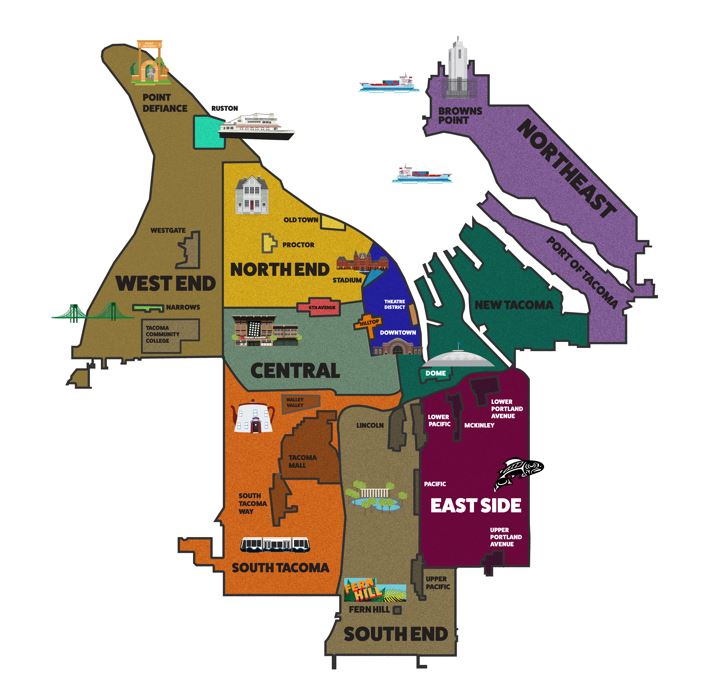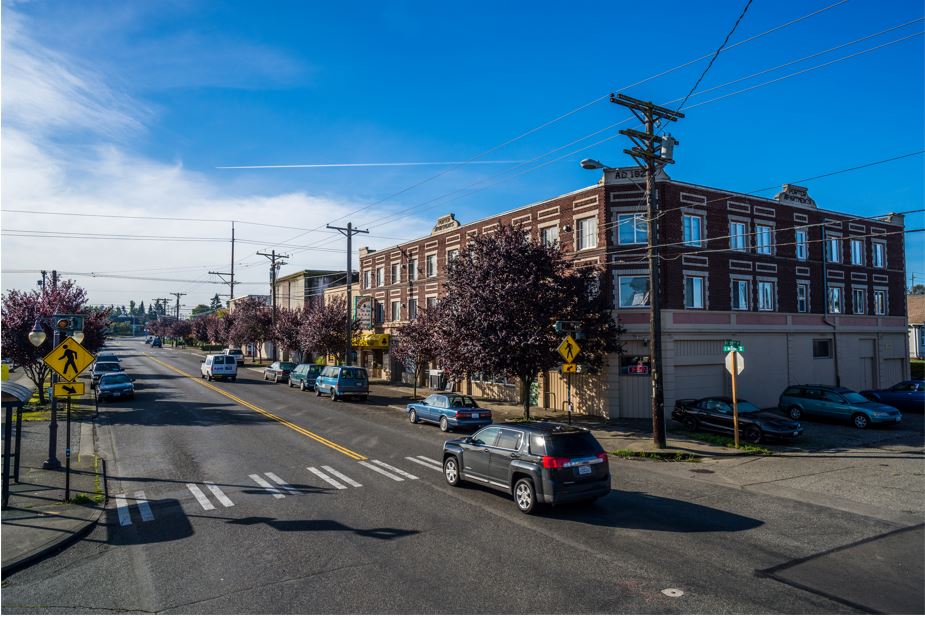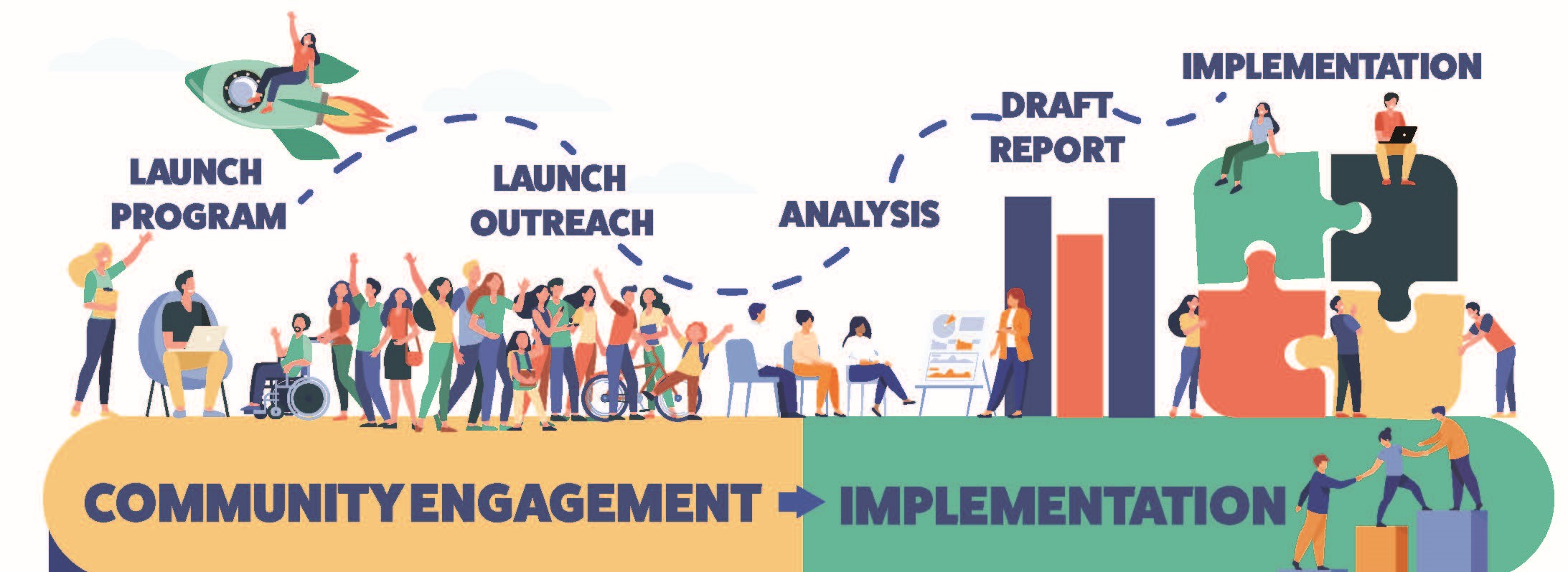Neighborhood Planning Program

The City of Tacoma’s award-winning Neighborhood Planning Program (NPP) was created by City Council in 2021. The Program brings together community organizations, businesses, residents, City departments, and partner agencies to identify a vision for the future—and then helps to implement that vision. These actions, ranging from short- to long-term projects, are aligned with other City programs and policies.
Throughout the process, the program supports:
- Equitably delivering City services
- Engaging the community at a grassroots level
- Developing community-led vision and action steps
- Aligning with other partners and existing policy direction
- Implementing co-created actions and recommendations
During the Program’s pilot phase, City Council identified the McKinley Hill and Proctor Neighborhoods as the pilot locations representing the spectrum of neighborhood development between growth creation and growth management. We are working in South Tacoma in 2024. Click on the below images to learn more about our work in each neighborhood.

 McKinley Hill Proctor
McKinley Hill Proctor

South Tacoma
City Council allocated resources to support the implementation of short-term goals in the selected neighborhoods, such as:
-
Art installations and murals
- Cleanup efforts
- Community identity, placemaking, and history
- Recognition and/or protection of cultural/historic resources
- Sustainability and environmental health actions, such as tree plantings
- Some elements of streetscape and public amenities
- Some elements of safety/traffic calming
- Determining the use of specific sites or properties
Why Neighborhood Planning?
This program provides enhanced planning and development support to help communities create strong, vibrant, and diverse neighborhoods. Led by residents from the neighborhood and informed by community engagement processes, the Neighborhood Planning Program considers immediate ways to make your neighborhood more vibrant and livable. The goal of a neighborhood planning process is not just creating and implementing a plan, the process itself is also a tool to help improve communities through building community capacity, constituent energy, relationships/partnerships, and co-creation opportunities for you to shape your own neighborhood.

Where does the Program work?
The Neighborhood Planning program works in the City of Tacoma’s Neighborhood Mixed-Use Centers. We work with City Council to prioritize the neighborhoods where we work, taking into consideration equity needs, neighborhood readiness, and resources for implementation.
While we focus on the neighborhood center—including the City-defined neighborhood business district, and Mixed-Use Center—for our recommended improvements, we invite neighborhood residents, organizations, and businesses from throughout the neighborhood to participate in the process.
Begin with what’s in front of you, what’s really there. If there is a there there, that’s where it is. --Ron Silliman
How It Works
Step 1: Internal & External Coordination
Neighborhood Planning staff connect and coordinate with external partners (organizations and agencies) and internal City of Tacoma staff to identify existing programs and available resources to implement projects.
Step 2: Launch Engagement
Neighborhood Planning staff complete extensive community engagement and outreach to collect initial input on key neighborhood issues, form the Steering Group, and identify interested residents, business and property owners, and other neighborhood stakeholders.
Step 3: Project Idea Generation
Steering Group and community events, online survey, and targeted outreach generate broad categories of potential projects and actions. Staff also evaluate project feasibility and existing conditions, including historic resources, infrastructure and transportation needs, current and planned parks and open space, land use and zoning (in a limited context), and alignment with City of Tacoma policies, such as the Equity and Empowerment Framework, Puget Sound Regional Council: Vision 2050; Tacoma's Strategic Plan, Tacoma 2025; the One Tacoma Comprehensive Plan, Transportation Master Plan, Vision Zero Action Plan, and Climate Action Plan.
Step 4: Project Specific Prioritization
Tacoma staff lead topic-specific community events (online and in person) and/or surveys to prioritize actions based on the initial projects identified by the community. The Steering Group works to combine community ideas and identify the most important projects and begin to form project committees to implement specific actions.
Staff evaluate existing conditions, including:
- Historic Resources
- Property Inventory
- Equity Index
- Mapping
- Infrastructure/Transportation
- Land Use/Zoning (in a limited context)
- Implementation of existing policy frameworks from PSRC: Vision 2050; Tacoma 2025; and the One Tacoma Plan.
Step 5: Plan Vetting & Adoption
Tacoma staff bring draft plan recommendations back to the community and internal partners to ensure the plan reflects what we heard and includes projects that can feasibly be implemented. The plan is reviewed by relevant boards and committees (Planning Commission and City Council’s Infrastructure, Planning, and Sustainability Committee) and recommended for adoption by Council.
Step 6: Implementation
Staff and City Council identify funding and strategies for “quick win” projects and work with community-led project committees to begin implementation.

For more information about the City’s Long-Term Zoning, Land-Use and Planning strategy, please visit
Planning and Development Services.
Become a Neighborhood Planning Partner
Neighborhood Planning starts with the neighbors. You are the expert on what works, what doesn’t work, what’s missing, and how it could work better in your neighborhood. Your involvement with your neighborhood plan is our main goal. Our plans are guided by a dedicated Steering Group—composed of residents (homeowners and renters), students, property owners, business operators and employees, and those who live, work, or spend significant time in the neighborhood—who help determine the plan’s priorities and recommendations. You can be involved in the process by:
- Joining the Steering Group in your neighborhood
- Volunteering to assist with surveys, leading outreach, hosting an event, or helping build connections with community members who prefer Spanish, Russian, Khmer, Vietnamese, Korean, Tagalog, ASL or other languages.
- Responding to surveys and attending events to share your feedback
- Helping with implementation, such as creating art, planting trees, or sitting on a committee
Stipends may be provided for specific contributions.